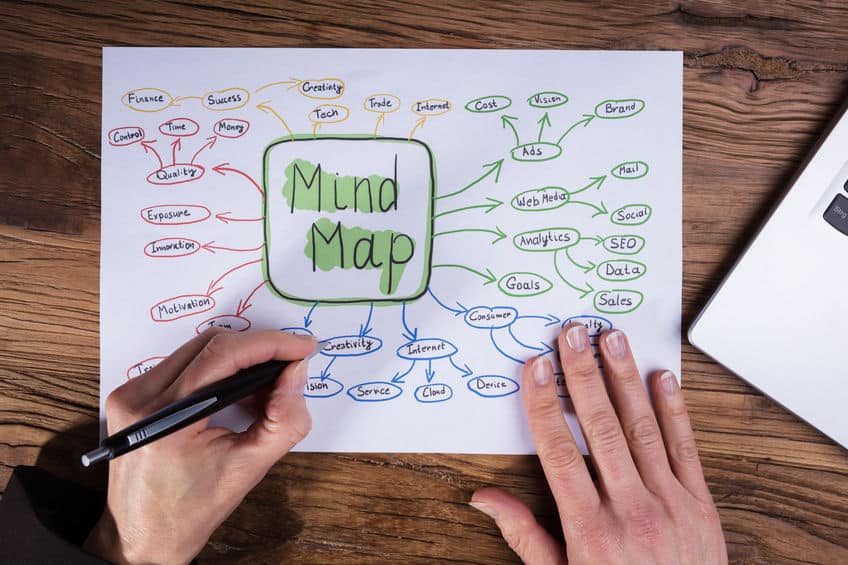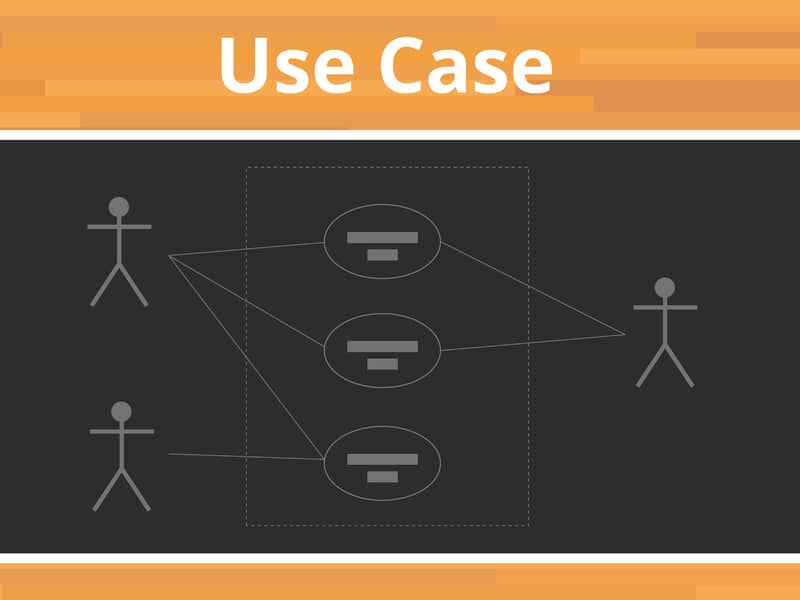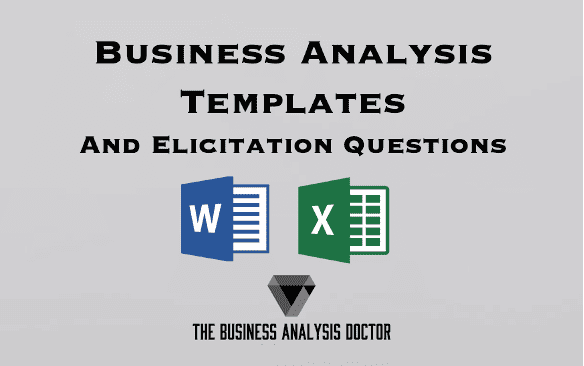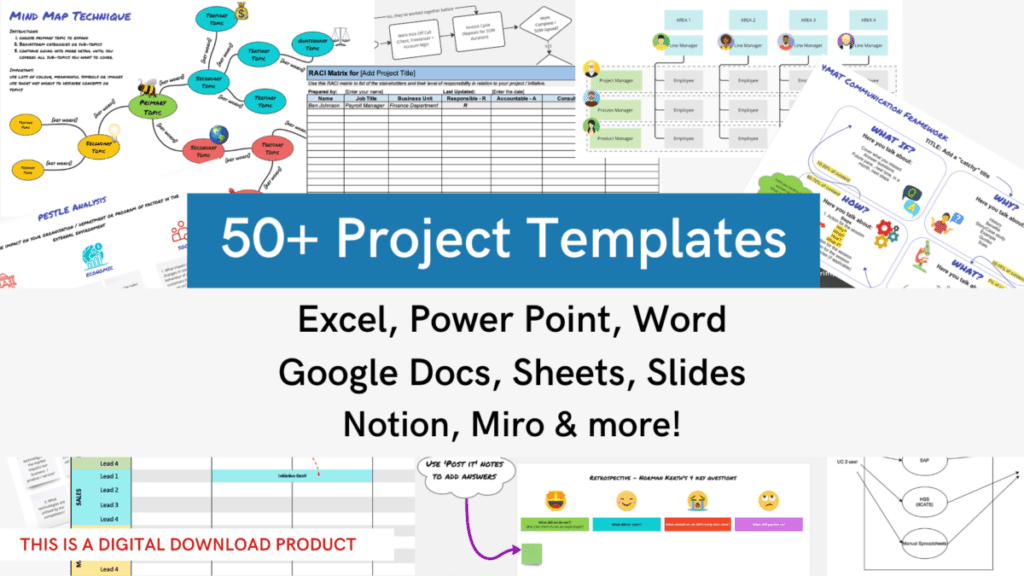The list of business analysis techniques available to support and help the business analyst while working on a project is virtually endless. The fast-changing dynamic of the field generates many new and innovative tools and approaches every year. The successful business analyst must always be on top of his/her game and keep up with new developments.
Business analysis techniques are a set of tools, methods, and approaches used by business analysts to analyse, evaluate, and understand business processes, systems, and problems. These techniques can be used in various stages of the business analysis process, such as requirements gathering, stakeholder analysis, and solution evaluation.
It should be noted that it is not that the best business analysis techniques are used throughout the project. It could be applicable for a specific phase of a project like at the beginning of the project or when the project is over. In addition to that, not that all the best business analysis techniques are applicable for all projects. They are project specific and used for particular purposes.
We have compiled a list of the best business analysis techniques. While it’s best to get familiar and try to master each of them, specific projects will require only the use of certain techniques. That’s why you can’t rank them in terms of value, so we listed them in alphabetical order.
The list of business analysis techniques include business process analysis techniques; modelling techniques in business analysis; and analysis techniques for business analyst.
Table of Contents
Business Analysis Techniques
Below is a list of popular business analysis techniques.
Acceptance and Evaluation Criteria
For a project to be successful, you need to properly establish the acceptance criteria for desired outcomes and conditions that must be met to satisfy the key stakeholders. This can’t be done without defining a set of measures known as evaluation criteria. Their purpose is to measure potential alternative solutions and rank them by the value they may bring to the stakeholders.
Active Listening
An important part of a business analyst’s job is taking part in the meetings with key players on a project. Mastering active listening will help you be heard and respected by the person across the table. This communication technique is fairly simple, yet very effective. It requires paraphrasing what you’ve just heard to confirm your engagement. In short, it’s saying your mental notes out loud.
ADKAR Model of Change
ADKAR
Agenda
A necessary prerequisite for a successful meeting is a precisely organised agenda. Well written agenda should contain concise details about the meeting’s goals and the list of topics.
As-Is Process Analysis
As-is process analysis refers to documenting a current state of a business process. Reaching the desired goals is not possible without correctly establishing the current situation in the organisation and the way the business operates today. It’s a great way to identify any existing issues and a basis on which to determine the next steps to be taken.
Ansoff’s Matrix
This business analysis technique provides a set of strategic alternatives that may be considered by organisations when defining their business strategy. The matrix maps new and existing markets against new and existing products.
Backlog Management
Backlog management is a way to organise and record any tasks that need to be done, but for various reasons are not yet completed. It implies prioritising work items in order of urgency and importance. Proper backlog management can increase efficiency and serve as an indicator of possible problems in the business process.
Balanced Scorecard
The balanced scorecard is one of the business analysis techniques that can help you measure and manage the performance of the organisation outside the traditional parameters. It gives you a better understanding of what drives the value of the business. This technique tracks learning and growth, the business process itself, customers and financial state.
Benchmarking and Market Analysis
To be successful in business you have to constantly be aware of the current situation in the field. Benchmark studies are a tool that enables you to compare yourself against the best in your line of work. And accurately done market analysis gives you an outline of the market – the structure of demand, external factors of influence and an overview of the competition.
Benefits Dependency Network (Benefits Map)
A benefits dependency network also known as benefits map
Boston Matrix
The boston matrix developed by the Boston Consulting Group to aid portfolio management. The matrix is 2×2 with 4 quadrants. The axes represent low to high market growth and low to high market share.
Brainstorming
The value of brainstorming when devising a plan or a strategy can’t be overstated. It’s a great way to generate new ideas and solutions. Group discussion produces a bunch of answers to a problem, presenting varied approaches and angles. These can often catalyse new ideas.
Business Analysis Plan
Creating a business analysis plan is used to outline requirements, deliverables, analytic approaches, and timeline of activities. It defines all the necessary actions for completing the project, and, as such, serves as a blueprint in the analysis process.
Business Capability Analysis
This business analysis technique is used to determine how capable enterprise is when it comes to reacting to maximise its potential and productivity. Business capability analysis provides an assessment of possible ways to improve performance and remove any obstacles for reaching set goals.
Business Cases
A business case
Business Domain Model
A business domain model is a visual overview used to demonstrate the key concepts of an organisation and how they are connected. It’s an extremely useful aid in communication between team members and can serve as a guide in developing a strategy.
Business Model Canvas
The business model canvas is a modern strategic and lean startup canvas for developing new or documenting existing business models. It is a visual canvas describing an organisation or product’s value proposition, infrastructure, customers, and finances.
Business Process Model
One of the more frequently used business analysis techniques, the business process model describes a sequence of activities performed by an organisation to reach set objectives. This tool provides great insight into the business process, making it easier to identify the possible problems.

Business Process Modelling Notation (BPMN)
This standardised notation, Business Process Modelling Notation (BPMN)
Business Rules Analysis
A convenient way to analyse the rules an enterprise adheres to when conducting its day-to-day business. It helps examine how clear and valid the existing rules are and alter them if needed to achieve desired objectives.
Change Request
A document that contains the information on the scope of change that needs to be made on a certain project. incorporating said change, having it accepted, and implementing change requests.
Collaborative Games
Collaborate games
Competitive Comparison
In its essence, a competitive comparison is a document that provides an analysis of how an enterprise ranks among its competitors. It can concentrate on a product and organisation in its current state or compare future potential.
Concept Modelling
Concept modelling
Conference Call
A necessary part of a project, conference call enables you to conduct a meeting with participants at different locations. It eliminates the need for separate meetings with interested sides.
Context Diagram
The context diagram
Data Dictionary
To properly use data elements on a project, they need to be standardised and well defined. Devising data dictionary
Data Feed Specification
It’s a document that contains the data being exchanged between organisations. Communication between partners can be very complex and data feed specification provides rules in which business and technical details are presented.
Data Flow Diagrams
An illustration of the data flow, these diagrams describe the way information comes in and out of the system and the way it’s processed. In modern organisations that are overflown with data, it’s one of the most essential business analysis techniques when it comes to a better understanding of the ongoing processes.
Data Mapping
Data Mapping is an important tool for data migration and integration. It’s, in its core, a dictionary that defines how data translates from one system to another.
Data Mining
The role of data mining is too examine and summarise large amounts of data providing mathematical models that describe the ongoing processes. If done properly, it uncovers patterns and relationships that are used to improve decision making.
Data Modeling
Data modelling implies the use of diagrams, along with text descriptions, to represent data objects, classes, and entities, as well as their mutual relationships. The most common variations of data models are: conceptual, logical and physical.
Day in the Life
The day in the life
Decision Analysis
It is of the utmost importance to properly asses possible outcomes that arise from going with a certain decision and solution to a problem. The role of decision analysis is too examine and predict these potential outcomes concerning a chosen course of action.
Decision Modeling
Decision modelling is used to describe how we come to a certain business decision. It explores the data, knowledge and a way of thinking behind a specific decision. It’s very useful for both complex and simple decisions.
Deliverables List
Deliverables list is one of the business analysis techniques used to examine and structure analytic efforts for a project. It contains the list of all key deliverables and is necessary to determine the course of analysis.
Document Analysis
Document analysis implies the inspection of materials available to the analyst. Through this process, the analyst gets a sense of the current business environment and organisational structure. It also provides a necessary context to understand business needs and validate the potential course of action.
Entity Relationship Diagram (ERD)
Entity relationship diagram (ERD) is a visual aid to help you better understand the relationship between business concepts. It’ a diagram displaying the way entities and their attributes. relate to each other. When done right, it can be a useful tool to gain a better understanding of a complex problem.
Estimation
Proper decision making is impossible without precise estimation of costs and efforts needed to implement a certain process. By predicting the values attributed to the key parts of a business process, estimation presents stakeholders with a clearer picture of the effectiveness of a chosen course of action.
Gap Analysis
Gap analysis
Given When Then Statement
A useful template for creating an acceptance test. It goes like this: Given (a context) When (action is taken) Then (and observable effect that should occur).
Five Whys (5 Whys)
This business analysis technique is useful for determine the underling root cause of a problem or issue. By asking Why five times – each answer provides the basis for asking the Why question repeatedly (five times) until the true root cause is established for the problem.
Financial Analysis
The financial analysis is used to asses the financial side of a certain course of action within the organisation, It explores potential costs and benefits to provide a correct assessment of financial viability and stability of proposed investments and solutions. In a dynamic business environment, it needs to be continuously applied to allow the business to assess the effects of potential changes.
Focus Groups
The focus groups are important because they provide valuable insight into the needs, attitudes, and opinions of participants. Participants need to be carefully selected to provide maximum value to business analysis. This, along with the properly chosen topic and objective can help generate new useful ideas and concepts for the organisation.
Four View Model
This business analysis technique for business change sets out the four key areas to be considered when identifying the changes that need to be made to an organisation. These changes fall in the areas of organisation, processes, people and technology. A variant of the four view model is the POPIT model
Functional Decomposition
This business analysis technique is used for breaking down more complex processes and systems into simpler components. Doing this allows for tracking and easier estimation of costs and efforts of a given process.
Glossary
A deliverable that is the key to the mutual understanding of all stakeholders, glossary documents all of the terms specific to a certain business domain. A clearly stated definition off a term helps remove any misunderstanding and ambiguity.
Interface Analysis
Interface analysis is a process that analyses the exchange of information between two systems. Interface, as a connection between two components, defines who uses the interface, what information is exchanged, and when and where the exchange occurs.
Interviews
An interview is a business analysis technique used to extract the information important to the business by talking to relevant stakeholders. For an interview to be fruitful, the interview questions need to be carefully designed and answers properly documented.
Item Tracking
Item tracking is used to address stakeholders’ concerns about potential problems regarding actions and processes. It’s used to track and examine those issues and assign the responsibility for them. This creates conditions for efficiently solving those issues.
Jobs to be Done (JTBD)
Jobs to be Done describes the mechanism that causes a consumer or customer to adopt an innovation. Jobs to be Done is a theory of consumer action that has at its core the theory that as markets grow, evolve, and renew whenever customers have a Job to be Done, and then buy a product to complete it (get the Job Done). Jobs to be Done describes how a customer changes or wishes to change.
Kano Model
The Kano Model
Lesson Learned
Lessons learned process documents successes and failures during a project. Identifying the changes that led to these occurrences can help improve techniques and solutions further down the project or in any future assignments.
Metrics and Key Performance Indicators (KPIs)
None of the business analysis techniques is as efficient when it comes to measuring the performance of solutions as using metrics and KPIs. It produces a quantifiable indicator of progress within the organisation. Key performance indicators are specifically used to measure and determine a current state of progress in reaching a strategic objective.
McKinsey 7-S
The McKinsey 7-S model defines the areas of an organisation that need to be in alignment if it is to operate effectively. The model is used to identify areas that need to change when implementing a business strategy and areas that will be affected by proposed business changes.
Mind Mapping
Mind mapping is a visual model that is used to show and capture the process of thinking and information. It’s commonly represented in the form of a diagram that maps the relationships between thoughts and concepts. This technique is an effective tool for summarising and communicating complex ideas and problem-solving.
Minto Pyramid
The Minto Pyramid

MoSCoW Prioritisation
The MoSCoW rules are used to help achieve clear prioritisation of requirements.
- Must – these are the fundamental or minimal set of requirements that must be satisfied by the solution;
- Should – these are important requirements for which there is a work around in the short term or where expectations can be managed;
- Could – these requirements could be left out;
- Would – these requirements can wait till a later time.
MOST Analysis
MOST analysis is used to analyse what an organisation has set out to achieve the business mission and objectives and how it aims to achieve this the strategy and tactics. MOST analysis
- Mission – the direction of the organisation;
= Objective – the goals that the organisations aims to achieve; - Strategy – plans and actions that enable the organisation to achieve the objectives;
- Tactics – short terms and actions that will support and deliver the strategy.
Non-Functional Requirements Analysis
Non functional requirements
Observation
Observing the system activities and the actual people that perform them reveal valuable information about the functioning of a business process within a given context. It can be active (where the observer actively engages during the process) and passive (without disrupting the flow of work).
Organisational Modelling
This business analysis technique involves creating a visual model of an organisational structure. Organisational modelling defines units, their responsibilities, and roles and how they relate to each other. It can be used to define the chain of authority and lines of communications within an enterprise.
PESTLE Analysis
PESTLE analysis provides a framework for investigating and analysing the external environment for an organisation. The PESTLE analysis framework identifies six areas
- Political – an example of a political factor could be a change of government;
- Economic – an example of an economic factor could be levels of growth within the economy. For example the coronavirus had a declining affect of the global economy.
- Social-cultural – an example of a social-cultural factor could be consumer behaviour patterns such as the use of plastics.
- Technological – an example of a technological factor could be the rise of cloud or big data technology.
- Legal – an example of a legal factor could be regulatory compliance laws.
- Environmental – an example of an environmental factor could be global warming and the need for the organisation to include green initiatives.
Porter’s Five Forces Framework
This business analysis technique examines the business domain or industry within which an organisation operates, and identifies the business issues that may be brought upon the that organisation to deal with. The Porter framework listed five areas of potential sources of pressures within an industry:
- Industry competitors;
- New entrants;
- Substitues;
- Buyers;
- Suppliers.
Portfolio Management
An extremely useful method from the business analysis techniques toolbox. It’s a process of organising various current projects within the organisation and describing their mutual relationships. Portfolio management helps informed decision making, especially when it comes to prioritising between different projects.
Problem Definition
Properly defining the problem
Process Analysis
Process analysis
Process Modelling
Used as a basis for process analysis, process modelling describes the workflow in an organisation. Through flowcharts or diagrams, it can display the occurrences during the process and provide the context for determining solutions.
Process Walk-Through
A session where experts on a matter, using product maps, explain (walk-through) the proposed process to the stakeholders. Its main purpose is to validate the desired outcome and identify potential gaps in the process.
Prototyping
The prototype represents the early model of a final outcome. By prototyping, we can address improper requirements by practically showing the functioning of a product in an early stage of development. Visual representation enables stakeholders to easier express their concerns and provide feedback.
Resource Audit
This business analysis technique is used to identify areas of strengths and of weaknesses within an organisation. The resource audit typically assesses the strengths and weaknesses in the following areas:
- Financial;
- Physical;
- Human;
- Reputation;
- Know-How.
Reviews
Constant evaluation of the work product is a prerequisite for its successful development. The object of reviews is the work product itself, not the participants. They can be conducted by using various methods, depending on a stage in development. With properly set objectives and techniques, reviews can help identify and remove defects in the early stages.
Rich Picture
This business analysis technique was popularised by the soft systems methodology put forward by Peter Checkland
Risk Analysis and Management
Constant use of this tool can help the organisation recognise and avoid the potential risks of a business process. Failure to do this can negatively impact the desired outcome. Risk analysis and management include identifying, analysing, and evaluating risks, as well as developing treatment plans on how to approach existing risks.
Roles and Permissions Matrix
Roles and permission matrix provides an understanding of the roles and responsibilities within the team and organisation. It defines the place of an individual or a group relative to the solution activity. Each role has an authority that permits performing a certain activity.
Root Cause Analysis
Identifying a cause behind the problem is essential for its successful solution. Root cause analysis is a technique deeply and systematically examines the problem to determine its origin.
SARAH Model
The SARAH model reflects the reactions of many people when they are faced with significant change in their lives. The SARAH model
Scope Modeling
Scope modelling is used to determine the limits of control, change, need or a solution. When set, these limits show if the examined element is in-scope of boundaries, out-of-scope, or both. Scope modelling can help determine the relevance of activities and apply the effort accordingly.
Sequence Diagrams
Sequence diagrams display the interaction between processes and objects during the execution of a scenario. The diagram does not depict mutual relationships between the objects, only the messages exchanges in chronological order.
Six Thinking Hats
Six thinking hats
Stakeholder List, Map or Personas
Documenting stakeholders helps the analyst gain a better understanding of roles and responsibilities within the team and organisation. Identifying stakeholder’s personas is useful when determining the source of requirements and defining the approach to the stakeholders. A useful tool in this regard is creating stakeholders maps, diagrams that describe relationships between the stakeholders and their relation to the solution.
State Modelling
The current state of an object within the system and the possible transitions from one state to another are analysed by state modelling. It describes all of the possible states entity can be in, and what events and actions trigger the changes of its state.
STEEP Analysis
STEEP analysis
STEEPLE Analysis
STEEPLE is based on the STEEP analysis but has a more in-depth addition of other various factors that the STEEP analysis does not have. STEEPLE 
Survey or Questionnaire
A great way to gather business information from multiple people, surveys or questionnaires poses carefully designed questions to stakeholders to gain useful answers. Surveys and questionnaires are an easy and inexpensive way to collect useful data and can be conducted in person, in written form or online.
SWOT Analysis
SWOT visually shows the strengths, weaknesses, opportunities, and threats of the organisation. It’s an effective technique that provides an overview of the situation in the organisation, taking into account both internal and external factors. SWOT helps focus the attention on the most important and urgent issues.
Target Operating Model
A target operating model
To Be Process Analysis
To Be process analysis helps determine the state the organisation will be in once the proposed changes are implemented. It defines how the business will operate in the future and takes into account current state, set objectives, and solutions.

Use Case and Scenarios
Use cases and scenarios show the desired outcome of a certain solution. They try to determine how an individual (or a system) will respond to the proposed solution and how it will contribute to reaching the set goal. When using use cases it is help to have use case specification guidelines

User Stories
In a simple and short form, user stories define the needs of a stakeholder. This further enables analysts to determine the values important to a stakeholder and strategise accordingly.
User Story Mapping
User story mapping
Value Chain Analysis
The value chain was developed by Michael Porter and shows the different organisational activities that are grouped together to deliver value to customers. The value chain is a useful technique when working on business process improvement initiatives and strategic planning activities.

Vendor Assessment
A vendor assessment is a useful technique when some of the solutions are outsourced. It involves the assessment of an outside vendor’s ability to provide the fulfilment of its obligations in a timely and proper manner.
VIRO Framework
The VRIO framework
Weighted Decision Matrix
A weighted decision matrix
Workshops
Workshops are meetings of the stakeholders where they collaborate in real-time to come up with new ideas, review the product or analyse requirements, among other things. They are a great way to boost relationships in the organisation, develop mutual trust and improve communication.
Conclusion – Business Analysis Techniques
The business analysis techniques listed in this article include most of the common techniques used by business analysts to perform their business analysis work. Not all the business analysis techniques will be used in a singe project. It is typical that as as business analyst develops with experience their exposure too techniques will increase.
It is important that the business analyst use their skill to determine which technique is appropriate to use. The advice is to read business analysis books






